Activities for Kids: Week 5
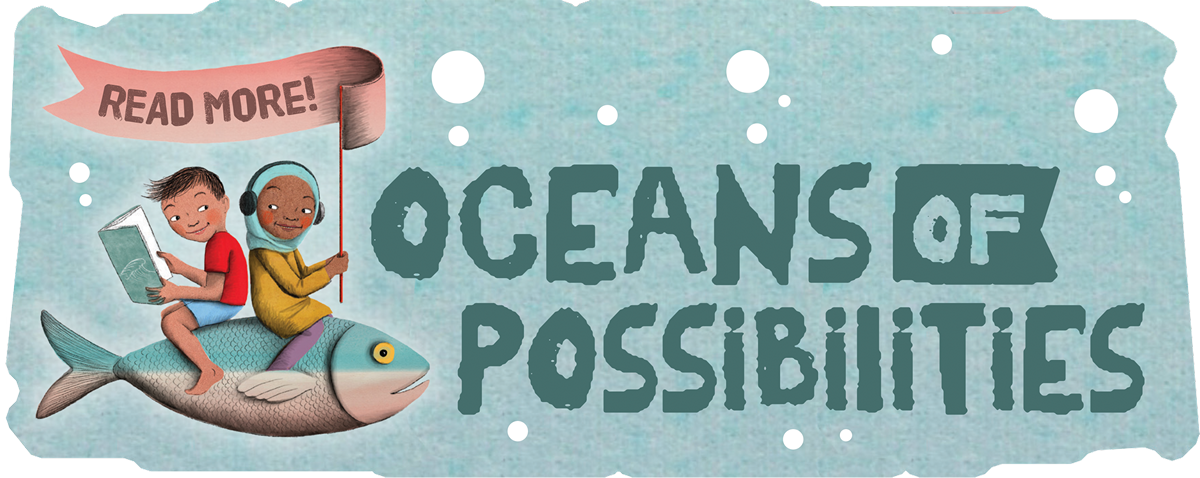
Ocean Drum
Version 1
Imitate the sound of ocean waves by making your own ocean drum. It’s great for a family to make together, maybe even making more than one so each member has their own drum.
Materials
Filler
- 1 cup dried chickpeas/garbanzo beans
- 1/2 cup dry, uncooked rice
- Tape
Note: You can use any combination of fillers you want. Other options include small beads, seeds, pebbles, sand, or other small round things. Play around and compare the sounds.
Container
- Parchment paper bag (cut to fit your box; or, parchment paper in a roll)
- Clean small pizza box or cereal box or flat mailing box from the post office
Instructions
- If using a parchment paper bag, cut two rectangles slightly smaller than your container. Tape securely three sides, add your chickpeas and rice, and tape up the last edge. If using a roll, simply make your own “bag”,
- Place the bag in a box where it can lay flat and have the full range for the chickpeas and rice to slide evenly from one side to the other.
- Tape the box shut.
That’s it! Play around with the speed at which you move the box around to find the rhythm of the ocean! Consider painting and/or decorating the outside of your drum for even more fun.
Version 2
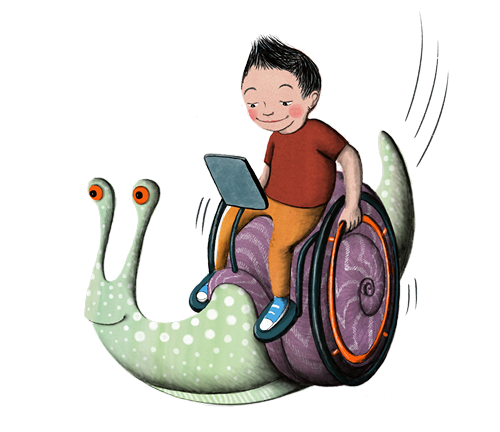
This is a slight variation. It uses clear plastic plates found at the dollar store. Now you can see the filler roller around.
Materials
Filler
- 1/4 cup dry, uncooked rice
- 1/2 cup dried chickpeas/garbanzo beans
Container
- Plastic plates
Other
- Hot glue or packing/duct tape
Instructions
- Add your filler to one plate.
- Run the hot glue around the edge of the plate (for kids, make sure to get help from an adult).
- Turn the other plate upside down and place on top of the glue, making sure secure all around.
Your drum is ready!
Note: If you don’t want to use hot glue, use packing/duct tape to tape the plates together.
Courtesy of Natural Beach Living
Octopus Slime

Materials:
- 5 oz. clear glue
- ½ cup warm water
- 2–4 drops food coloring
- ½ tsp. baking soda
- 1–2 Tbsp. contact lens solution
- Mixing bowl
- Spoon
- A variety of small containers to test slime texture and shape, such as toilet paper tubes, ice cube containers, condiment cups, etc.
Octopuses have soft bodies, with the exception of their beaks, so they can fit into incredibly small spaces. In 2016, Inky, an octopus at New Zealand’s National Aquarium, escaped his tank through a small opening, crawled across the floor, and then slid through a drainpipe that led directly to the sea. Inky was roughly the size of a soccer ball and the drainpipe was only a few inches wide. After making the slime, mimic Inky’s escape and have children test what shapes and containers it can fill easily.
Instructions:
- Combine the glue and water.
- Add food coloring of your choice and mix well.
- Add the baking soda and stir.
- Now add the contact lens solution in a slow, steady stream. It is important to go carefully here. The chemicals in the contact lens
solution activate the recipe, so make sure you don’t go too fast or add
too much. - Stir it well, at first with a spoon, and then knead it with your hands. It will be sticky at first, but the longer you knead it the smoother it will become.
Blobfish Slime
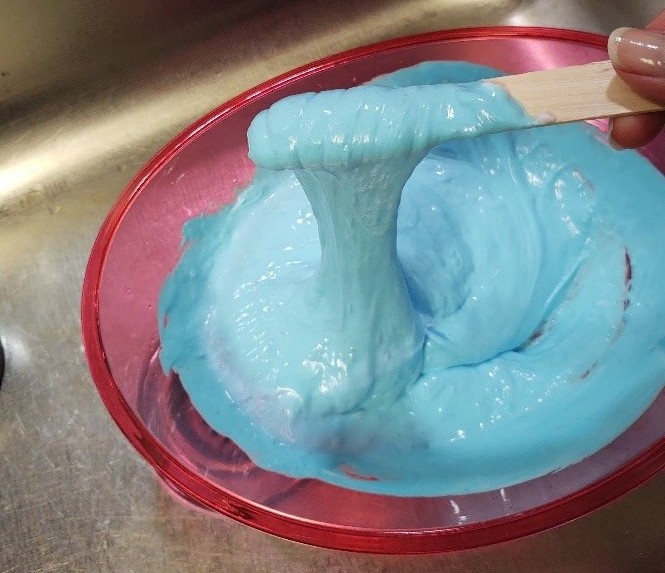
This program’s slime innovation is to add googly eyes, which turn your ho-hum mound of slime into a quivering blobfish. This is messy!!
What you will need (slime ingredients)
- 1 cup (8 oz) of White school glue
- 1½ cups of Shaving cream
- ½ teaspoon of Baking soda
- Saline solution
- Food coloring
- 2 tablespoons of hand/body lotion
- Googly eyes, beads, or marbles for eyes. I used flat clear Aquarium Pebbles with pupils drawn on with Sharpie for my eyes.
Tools
- Measuring cups
- Plastic bowl, clear if possible, disposable
- Craft stick for stirring, or similiar
Important Preparation
To ensure a no-mess cleanup, first measure one cup of water into the plastic bowl you are using and make a mark at the top of the water line. Empty the water out of the bowl and dry it well. Then pour your glue in to where you measured.
Example: I used a clear red plastic bowl, poured in a cup of water, and marked the outside with a black Sharpie. Then it was easy to take the top off of the glue bottle and fill the bowl with the glue.
Slime Recipe
- Mix 1 cup glue and 1½ cup shaving cream into a bowl.
- Add 2 or 3 drops of food coloring. Do not add too much! It will come off on your hands a little bit. Stir until the color is uniform to make sure the ingredients are well combined.
- Add ½ tsp baking soda and stir.
- Add large squirts of saline solution until the slime is no longer sticky and the sides of the bowl come clean. It will become one big glob.
- Add lotion to make the slime stretchy. The easiest way is to squirt it along the length of the slime as you stretch it.
- Add googly eyes to finish.
It lasts several days sealed up in a plastic baggie.
Images
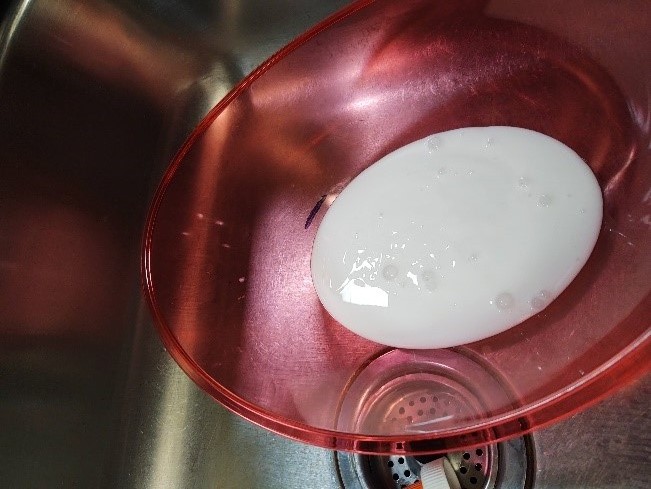

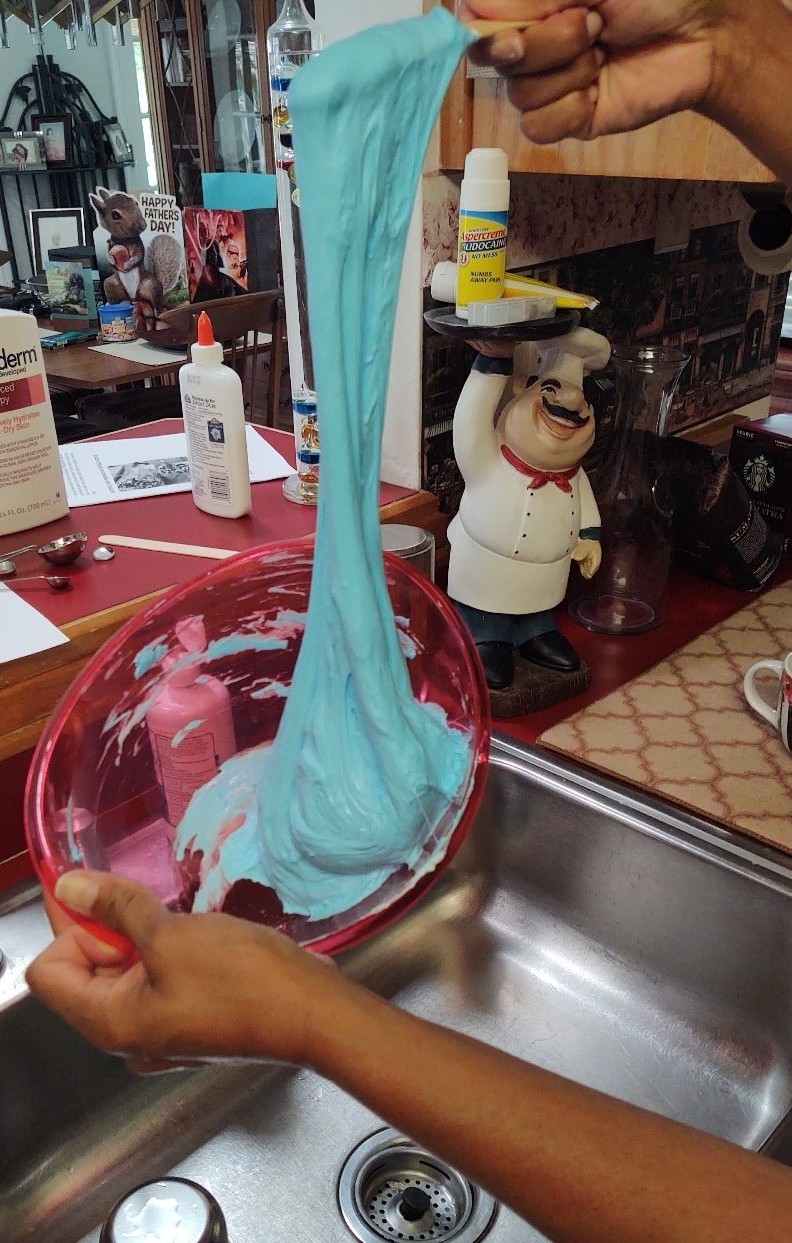

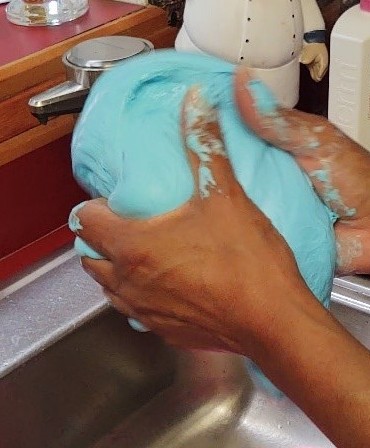
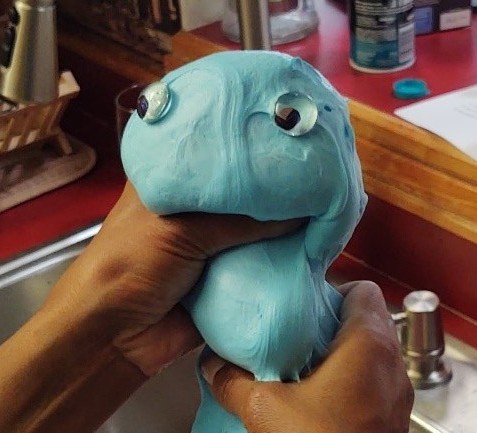
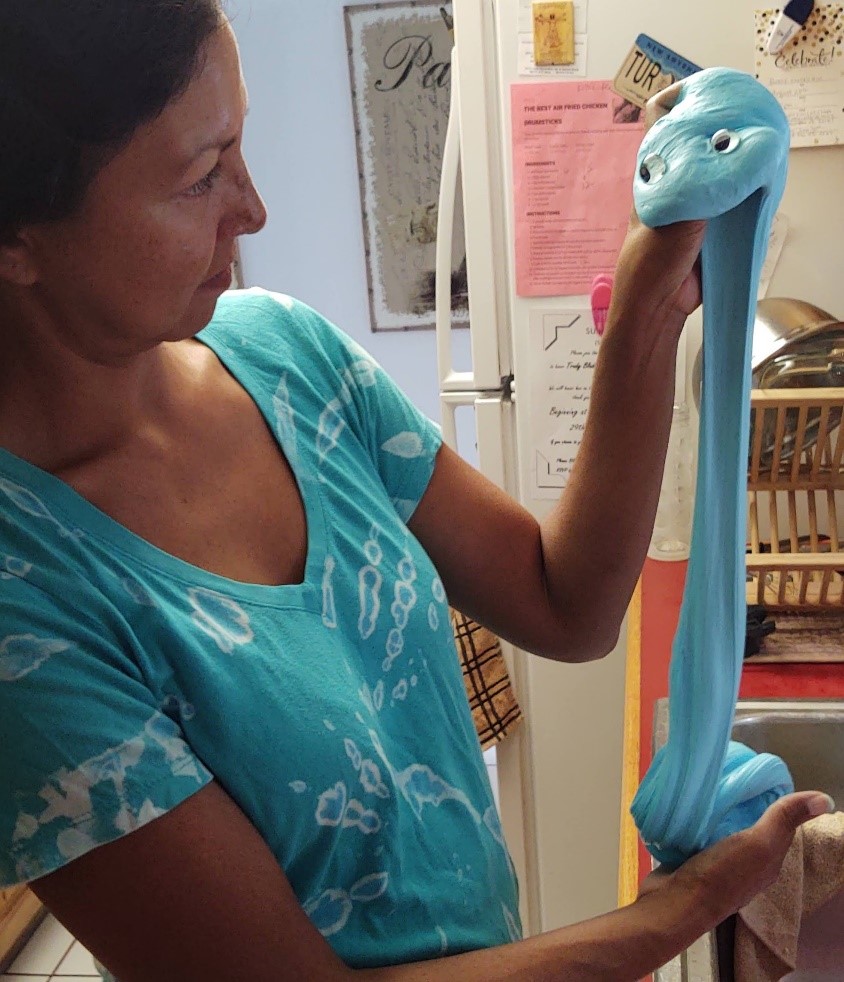
Mariana Trench and Plate Tectonics - Edible model
This delicious model describes the structure of the Earth's plates and the Earth's layers as well as the theory of plate tectonics.
The Mariana Trench reaches more than 7 miles below the surface of the Pacific Ocean.
It is the deepest spot on Earth, and was created by a subduction zone, where two massive slabs of oceanic crust, known as tectonic plates, collided a very long time ago during continental drift. At a subduction zone, one piece of oceanic crust is pushed and pulled underneath the other, sinking into the Earth's mantle, the layer under the crust.
Questions during activity: How far is seven miles? Find some examples of what is 7 miles away from your house, and then putting your hands on the floor, imagine going 7 miles underneath and imagine, how deep ithis trench under the ocean is.

Vocabulary
- plate tectonics - theory of geology which states that the Earth's crust is made up of large sections which move very slowly
- continental drift - the slow movement of the continents on the Earth
- convergent boundary - boundary at which tectonic plates are moving toward each other
- divergent boundary - boundary at which tectonic plates are moving away from each other
- transform boundary - boundary at which tectonic plates are moving past each other
- subduction zone - At the boundary of 2 tectonic plates, one tectonic plate slides under the other
- convection currents - movement of heated particles into an area of cooler fluid
- lithosphere - Earth's crust and outer mantle which float on the asthenosphere
- asthenosphere - Viscous layer of the upper mantle on which the lithosphere "floats"
Materials
- 20 oz jar of Nutella
- 10 oz jar of honey
- 1 sourdough roll ( a roll with a crusty top) for each child
- apple corer or sharp thin knife
- spicy cinnamon candy (or other round hard candy)
Preparation:
- Cut the crust of the sourdough roll into pieces (represent the Earth's tectonic plates)
- Remove the pieces of the crust.
- Cut a 1" plug using the apple corer or sharp knife, careful, not all the way through.
- Cut 1/2" off of the end of the plug of bread.
- Fill the cavity with honey in the center. (about 2 oz)
- Drop a hard candy into the honey (solid core)
- Replace the plug.
- Cover the roll with 1/4" - 1/2" thick layer of Nutella. (represents the outer layer of the mantle)
Procedure
- Begin by giving each child a model and describing them as a model of the Earth.
- Ask the students what part of the Earth they are touching (the crust)
- Have students push the plates gently against each other. * Ask - When one plate moves away from another (divergence) what happens on the other side of this same plate. They should figure out it would move toward a plate on the other side (convergence)
- Have them model convergence, divergence, and transform boundaries.
- After students have all had enough time to process, have the students peel off the crust. They may eat the crust. Discuss crust as similar to pizza crust because it is on the outside of the Earth like pizza crust is on the outside of the pizza. It is the outer layer on which we live.
- Tell them that the gooey chocolate represents the mantle of the Earth (plastic moldable - lithosphere floats on the asthenosphere). Semi-molten rock known as magma, about 1600-4000° Fahrenheit. Tell them ideally the chocolate Nutella should go all the way through to the core. Discuss models and their use in science if time allows. For more advanced students, discuss the convection currents that scientists believe fuel continental drift.
- After a discussion of the mantle, students may eat to the liquid outer core (honey) 4000- 9000° Fahrenheit.
- Warn them there is a hard candy in the very center, which is the very center of the core of the Earth, which is solid and made up of iron and nickel with a temperature of 9,392° Fahrenheit.




